See Your Strikes and Increase Your Catch
Good strike indicators are essential for river smallmouth bass fishing! Without them you’re dramatically limiting the techniques you can effectively perform and how many fish you’ll hook in a day. So I never leave home without my strike indicators. Strike indicators are essential for doing the deadly “Crayfish Hop” technique. I also rely on them almost anytime I’m using a subsurface pattern with a floating line. The only time I don’t use indicators are those rare occasions when I steadily retrieve a fly directly against the current. With all other retrieves, the river current creates line belly (slack line), so it’s difficult to feel the pull of a strike.
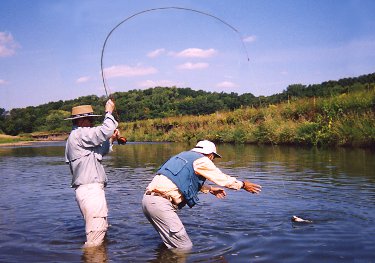
Tim landing a 17-incher for a school student who did the Crayfish Hop with a strike indicator.
In fact, I’ve often compared smallmouth bass catch rates with and without using an indicator. A fishing partner will use a strike indicator and I won’t. He’ll catch more fish than me. Then the next time I use an indicator and he doesn’t. This time I catch more. I’ve done these on-the-water comparisons dozens of times over the years with various guys. Almost every time, the person using a strike indicator detects and hooks substantially more smallies than the person who doesn’t.
So why would you want to throw away half of your strikes by not using a good indicator? Especially since it is so quick, easy and inexpensive to increase your catch rates with one.
Good quality strike indicators can dramatically improve your fishing. But, unfortunately, most of those sold are lousy for smallmouth bass fishing. The tiny trout ones are invisible more than a few feet past the rod tip. Many others fall off the leader with just a few vigorous casts, or they break after a little use. And some bobber-style indicators offered are huge and difficult to cast as well as insensitive and obtrusive.
Over the years I’ve tried all these types and have been very disappointed with them. So for the past decade, I’ve been making my own strike indicators, for my personal fishing and for guiding and smallmouth schools. Now, for the first time, these custom-made indicators are available to the public.
Smallmouth Fly Angler Strike Indicators
If you fish subsurface without a strike indicator, you’re throwing away half your strikes. Finally, here is a highly visible strike indicator that’s easy to cast and will stay on your leader. Unlike other small indicators that break or fall off, or bulky bobber-style indicators, our Smallmouth Fly Angler brand indicators really work. Peg one at your line and leader junction, and start catching more fish.
> Easy On & Off
> Stay on the Leader
> Durable, Long-Lasting
> Highly Visible
Available in two sizes: medium and large. (The LARGE size is Tim’s favorite– most durable, visible and longest-lasting)
What Makes These So Good?
> They’re quick and easy to put on and take off the leader. There is no need to cut the fly off or try to poke the leader through some tiny hole. Just slide the leader in the slot and peg it on.
> These babies really stay on!! I’ve watched dozens of other companies’ indicators come off the leader after just a few casts. My Smallmouth Fly Angler brand indicators stay on all day and for hundreds of casts.
> They are durable and extremely long lasting. I’ve used a a single strike indicator for several consecutive days of hard fishing, making thousands of long casts, without the indicator breaking or coming off.
> They are bright and large enough to be highly visible, so they truly live up to their name and “indicate” when a fish takes the fly.
Try these new indicators,
and start catching more fish.
Two Sizes for all Situations:
> The “Medium” size is good for “close-in” fishing. It can be seen 35 feet away, especially if the light is good and the river surface is not choppy or foamy.
The “Large” size is the best for all-around river fishing. A little longer and larger diameter, they can be seen at 45 to 50 feet, even when the light is low or the surface is roiled. They are also the most long-lasting, and can often be used for several trips.
Strike Detection with an Indicator
Naturally, a strike indicator is only as good as the person watching it. Trout and steelhead anglers who do a lot of nymphing quickly learn to read their smallmouth indicators. But unfortunately, guys without those angling backgrounds often have trouble detecting light bites. In fact, I’ve had plenty of guiding clients and school students who only noticed a small percent of the strikes that I saw.
The main reason for poor strike detection is that too many anglers expect the indicator to do something dramatic, like zoom across river, every time a fish takes their fly. In reality, with a typical pull-and-pause retrieve, many bites occur on the pause, so the indicator only momentarily twitches or dips or quivers slightly.
Here’s how to detect these light bites: Closely watch how the indicator performs during several normal retrieves. Then whenever the indicator does something different than that, assume that it’s a fish taking the fly. Of course, not every time your indicator acts “different” will it be a strike. But sometimes it will be a fish, and as you get better at reading your indicator, less of them will be false strikes and more will be biting bronzebacks.


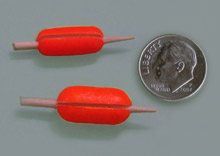
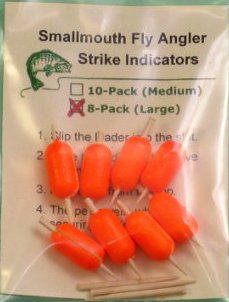
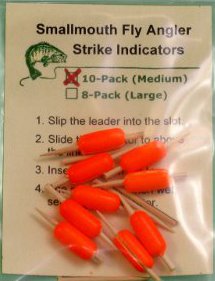
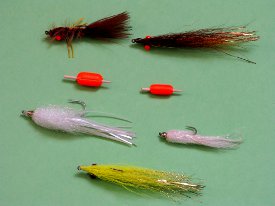
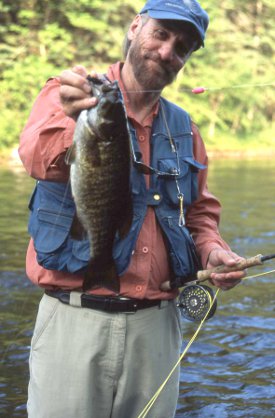
Great tips for catching smallies. Thanks!